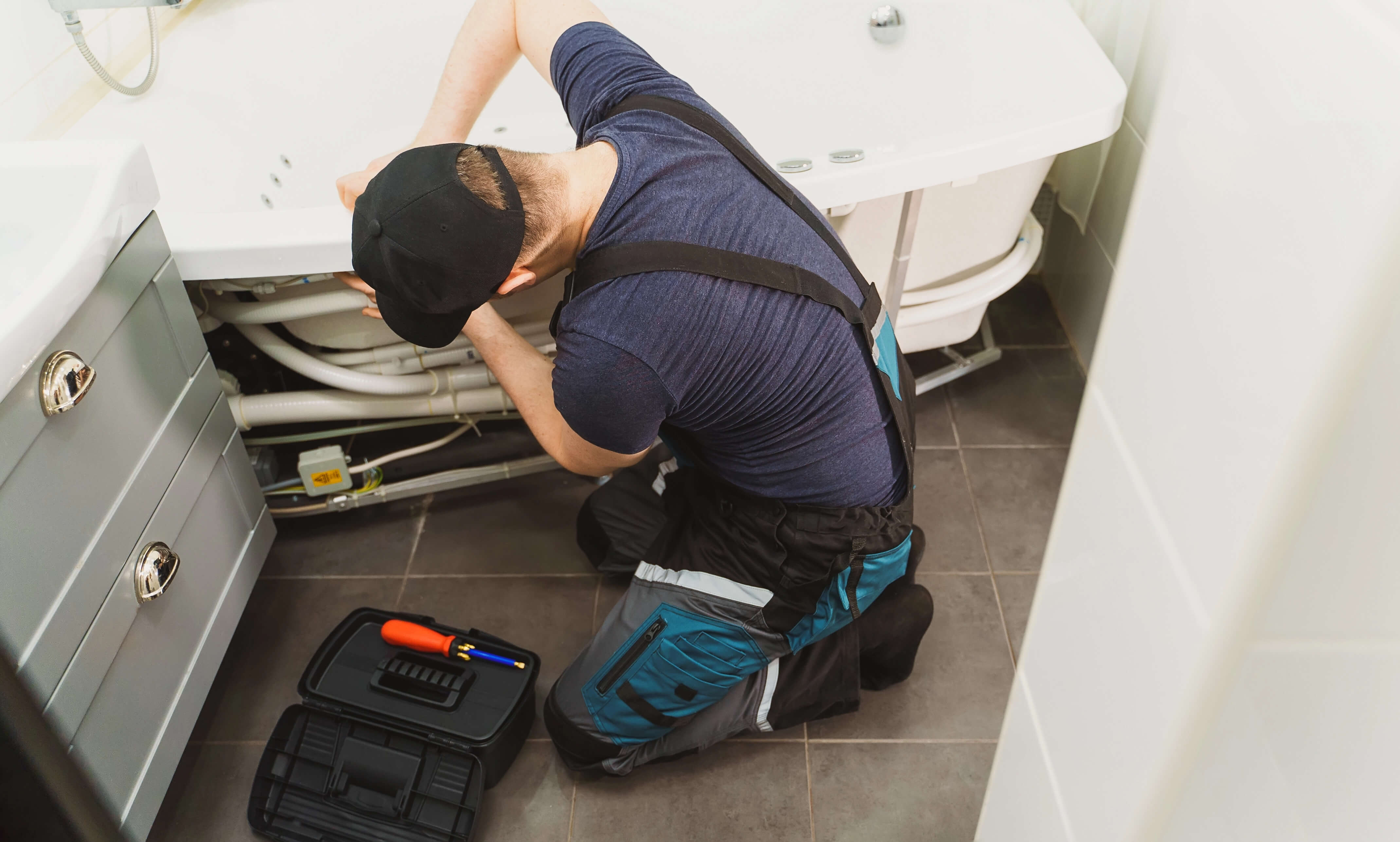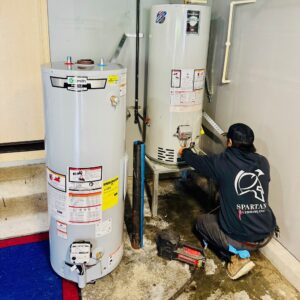
A full plumbing inspection is one of the most important preventative maintenance services you can schedule for your residential or commercial plumbing system. While plumbing components are built to last, hidden issues like leaks, corrosion, or clogs can gradually lead to costly damage behind walls, under floors, or even within the foundation.
Whether you’re buying a new home, managing a commercial property, planning a renovation, or simply looking for peace of mind, a full plumbing inspection by a licensed plumber like the team at Spartan Plumbing Inc. can help you avoid expensive surprises.
But what actually happens during a plumbing inspection? Let’s walk through each step of the process and what you can expect when you schedule this service.
Table of Contents
- Why Plumbing Inspections Matter
- What Is Included in a Full Plumbing Inspection?
- Optional Upgrades and Modernization Checks
- After the Inspection: Report and Next Steps
- Trust Spartan Plumbing Inc. For Thorough, Reliable Inspections!
Key Takeaways
- Early Detection Prevents Damage: Full plumbing inspections help catch leaks, clogs, and deterioration before they cause major problems or costly repairs.
- Covers the Entire System: From water lines and shut-off valves to toilets, drains, and water heaters, every component is checked for performance and safety.
- Advanced Leak Detection Tools: Plumbers use tools like infrared cameras, acoustic sensors, and pressure tests to find hidden issues.
- Camera Scopes for Drain Inspections: Interior drain and sewer line conditions are evaluated using video scopes to detect obstructions or damage.
- Water Pressure Matters: Low or inconsistent water pressure could indicate deeper problems like pipe blockages or a malfunctioning pressure regulator.
- Toilet and Water Heater Checks Are Crucial: Toilets are inspected for leaks and stability, and water heaters are assessed for age, rust, and efficiency.
- Work with Trusted Pros: Choosing licensed and experienced professionals like Spartan Plumbing Inc. ensures a thorough, accurate, and helpful inspection.
Why Plumbing Inspections Matter
Plumbing issues often go unnoticed until they become emergencies.
A full inspection helps:
- Catch leaks before they cause water damage
- Identify clogs and backups early
- Detect pipe corrosion or deterioration
- Ensure proper water pressure and flow
- Confirm that appliances and fixtures are functioning correctly
- Prevent mold and mildew from hidden moisture
By addressing problems early, a full inspection can extend the life of your plumbing system and protect your property value.
What Is Included in a Full Plumbing Inspection?
A comprehensive inspection covers your entire plumbing system, from the water supply lines to the drainage and sewer systems. Professional plumbers follow a detailed checklist to ensure nothing is overlooked.
Here’s what plumbers typically assess:
1. Visual Assessment of Fixtures and Exposed Pipes
The inspection starts with a walkthrough of the property. The plumber will visually inspect all sinks, toilets, bathtubs, showers, faucets, and exposed piping.
They look for signs of:
- Water stains or dampness around fixtures
- Corrosion or rust on pipes
- Visible leaks
- Mold or mildew near plumbing areas
- Loose or worn components
This part of the inspection helps identify obvious issues that may indicate deeper problems.
2. Water Pressure and Flow Testing
 Next, the plumber will test water pressure at various fixtures.
Next, the plumber will test water pressure at various fixtures.
Poor water pressure can indicate:
- A clog or mineral buildup in pipes
- Leaking pipes
- A failing pressure regulator
They’ll also check the flow rate from faucets and showerheads to ensure water is flowing freely and consistently throughout your home.
3. Checking for Hidden Leaks
Using specialized tools, plumbers can detect leaks behind walls, under floors, or in ceilings.
Common leak detection methods include:
- Infrared cameras to identify temperature changes caused by moisture
- Acoustic sensors to listen for water escaping from pipes
- Pressure tests that reveal slow leaks in water lines
Even small leaks can lead to significant water damage and increased utility bills, so catching them early is essential.
4. Inspection of Drains and Waste Lines
Slow drains are a common sign of buildup or clogs in the plumbing system.
During the inspection, we’ll:
- Run water through each drain to observe flow
- Use a camera scope to inspect inside the drainpipes.
- Identify obstructions such as grease buildup, hair, tree roots, or foreign objects
- Check for signs of sewer line damage or deterioration
If the camera inspection reveals blockages, they either provide snaking or hydro jetting to clear them efficiently.
5. Toilet Function and Seal Inspection
Toilets are often the source of water waste and leaks. Your plumber will:
- Check the toilet’s flush and refill mechanism
- Test for leaks at the base or tank
- Ensure the wax ring seal is intact
- Look for signs of rocking or instability
A small leak from the base of a toilet can ruin subflooring over time, so this is a key part of the inspection.
6. Water Heater Evaluation

The water heater is a vital appliance in your plumbing system.
During an inspection, the plumber will assess:
- The age and overall condition of the unit
- Signs of rust or corrosion on the tank
- Proper function of the pressure relief valve
- Presence of sediment buildup at the bottom of the tank
- Venting and temperature settings
If your water heater is more than 10 years old, your plumber might recommend replacement to avoid sudden failure.
7. Shut-Off Valves and Safety Devices
In an emergency, functioning shut-off valves are crucial to minimizing damage.
The inspection includes:
- Checking that all water shut-off valves are accessible and operational
- Testing the main water shut-off valve
- Inspecting pressure regulators, backflow prevention devices, and expansion tanks
A broken valve in a plumbing emergency can escalate water damage very quickly, so we make sure everything is in working order.
8. Sewer Line and Septic System (If Applicable)
For homes with sewer systems or septic tanks, the inspector may recommend a more detailed look at the sewer line using a video camera inspection. This helps identify:
- Pipe cracks or collapses
- Root intrusion
- Slope issues
- Waste flow restrictions
If you’re on a septic system, a separate septic inspection may be advised to ensure proper function and tank levels.
Optional Upgrades and Modernization Checks
Professional plumbers also check for outdated materials, such as:
- Galvanized steel or polybutylene piping (prone to corrosion and leaks)
- Old plumbing fixtures that waste water
- Inadequate insulation on pipes
- Lack of pressure-balancing valves for temperature control
They usually provide recommendations on modernizing your plumbing system to improve efficiency, water conservation, and safety.
After the Inspection: Report and Next Steps
Once the inspection is complete, you’ll receive a detailed report summarizing:
- All findings and potential concerns
- Recommended repairs or replacements
- Photos or video footage (if applicable)
- Estimated costs for necessary services
Trust Spartan Plumbing Inc. For Thorough, Reliable Inspections!
At Spartan Plumbing Inc., we believe in protecting your home from the inside out. Our plumbers use the latest technology, years of experience, and a detailed checklist to ensure your plumbing system is operating at its best.
Whether it’s your first inspection or part of ongoing maintenance, we’re here to make the process simple, transparent, and informative.
Contact us today to schedule a full plumbing inspection. Get ahead of problems, protect your investment, and enjoy peace of mind knowing your plumbing is in expert hands!
